China was such a mystery before I started to actually explore it. I had a bunch or perceptions of what I’d find and it wasn’t like that at all… until we went to the imperial garden in Xi’an. The Tang Lotus Garden, aka Tang Paradise, is near the amazing Giant Wild Goose Pagoda and was everything I’d hoped for as I searched for the Imperial China I’d always read about. The Xi’an imperial garden captured everything from art to architecture, landscape to lanterns.
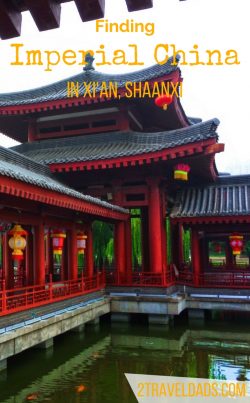 We only spent an afternoon in the Tang Paradise and at the Giant Wild Goose Pagoda, but could’ve spent a whole day. The Xi’an imperial garden was expansive and perfect. The ideas I had about China circled around ancient history and modern day strife. Yeah, no. The Tang Lotus Garden was perfection from entering until we left. The temple complex around the pagoda was the same. I found the Imperial China I was looking for.
We only spent an afternoon in the Tang Paradise and at the Giant Wild Goose Pagoda, but could’ve spent a whole day. The Xi’an imperial garden was expansive and perfect. The ideas I had about China circled around ancient history and modern day strife. Yeah, no. The Tang Lotus Garden was perfection from entering until we left. The temple complex around the pagoda was the same. I found the Imperial China I was looking for.
Who is this Tang and why does he have an imperial garden?
Not a lot of people that grow up in western culture study too far into Chinese history. Here’s a quick note about the Tang Lotus Garden and how it came to be, and “Tang” is in reference to a whole dynasty, not just one person:
The Emperors enjoyed praying and spending time at the Giant Wild Goose Pagoda in Xi’an, which is a Buddhist temple compound. Following prayers, they would walk for quite some time and often stay over close by before returning to the summer palace. Gardens and structures were built in service to the Emperor.
Over the years and following the relocation of the capital to Beijing, the Giant Wild Goose Pagoda continued to be a center for Buddhism, but there was no emperor milling about the nearby gardens. Only in recent history was the site renovated and recreated to showcase the cultural high point that was the Tang Dynasty. True, very little of the Xi’an imperial garden/Tang Paradise is original to the 7th century or thereabouts, but the recreations and details are congruent with everything you read about the time. A day at the Tang Lotus Garden is a day in another era. It’s amazing.
Note: before you visit China, spending a little time browsing wikipedia or reading up on the evolution of China over the centuries will be of great help. The history is rich and runs deep. It’s completely worth investing some brain-power prior to a visit.
What will you find at the Xi’an imperial garden
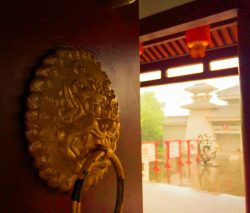 All around the outside of Tang Paradise you’ll see modern architecture with elements pointing back towards the Tang Dynasty (1400 years ago). Even the nearby Starbucks incorporates the style both on the exterior and inside. Once inside you’ll really be overwhelmed with it all.
All around the outside of Tang Paradise you’ll see modern architecture with elements pointing back towards the Tang Dynasty (1400 years ago). Even the nearby Starbucks incorporates the style both on the exterior and inside. Once inside you’ll really be overwhelmed with it all.
Upon entry, you’re greeted by golden dragons, a sign of the Emperors, and then things only become more grand. Meandering pathways take you past poetry and calligraphy all across the rocks. There are sculptures and art installations telling ancient stories and fables. This is the more modern aspect of the Tang Paradise gardens.
Tip: if you can tour the Xi’an imperial gardens with a local or anybody well versed in mandarin, the many art sites and carvings will make much more sense. It’s pretty without the understanding, but knowing the context and meaning is really helpful in enjoying the trip.
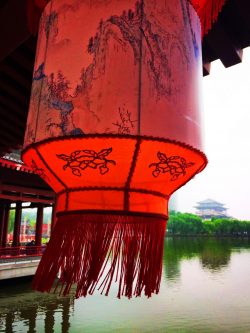 The landscape all through the Tang Paradise is also incredible. Of course there are still ponds and perfect willow trees, but there are also streams and waterfalls. There are water gardens and temples. Black swans swim below you as you wander the property.
The landscape all through the Tang Paradise is also incredible. Of course there are still ponds and perfect willow trees, but there are also streams and waterfalls. There are water gardens and temples. Black swans swim below you as you wander the property.
It’s difficult to say what was the most captivating area within the Xi’an imperial gardens, but it’s a close call between the colonnades with painted Chinese lanterns or the still lake with koi and lily pads floating close by. I think it was the colonnade, as nothing got me quite as thrilled as being in Colorful China surrounded by reds, golds and blues. It’s all just so perfect and it was like we had the whole place to ourselves.
Note: we visited Xi’an at the end of the summer when there were still lots of outdoor performances going on. Other times the schedules are more sparse, but if you’re there during good weather you can catch anything from traditional Chinese opera performances to movies played on water spray-screens.
Visiting the Giant Wild Goose Pagoda
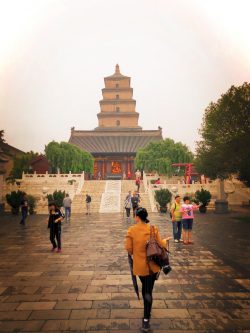 Next door to the Xi’an imperial garden/Tang Paradise is the Giant Wild Goose Pagoda. From a distance we could see the pagoda breaking through the rain and fog, but by the time we got there it was a cloudy day turning into a beautiful night. Perfect atmosphere for exploring.
Next door to the Xi’an imperial garden/Tang Paradise is the Giant Wild Goose Pagoda. From a distance we could see the pagoda breaking through the rain and fog, but by the time we got there it was a cloudy day turning into a beautiful night. Perfect atmosphere for exploring.
Note: the term pagoda is in reference to a tower, and in this case it’s a tower at the center of a Buddhist compound with some amazing sights to see.
So, after strolling through the beautiful and perfectly Chinese gardens in the Tang Paradise and being totally satisfied with the experience, why keep going and head over to the Giant Wild Goose Pagoda? Here’s a list why and then a collections of pictures. Just try to not want to go. Try.
The Giant Wild Goose Pagoda was built in the 7th Century (totes old)
It’s a UNESCO World Heritage Site (since 2014)
From the shorter Bell and Drum towers with the Pagoda complex to the many temples around the pagoda, each one proclaims “Colorful China”
The architecture is stunning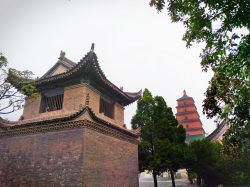
The people you meet are so wonderful and there to both worship and to celebrate visitor’s appreciation of the many aspects of Buddhism
There are kitties to pet
Your day can only get better if you venture into the Giant Wild Goose Pagoda area, for sure. It’s really amazing and unlike any of the other temple sites we visited. If only we could’ve lingered longer and gotten to go back another day as well. Next time…
Tip: like with any religious area, you need to be respectful of those who are present for their own religious purposes. Also, pay attention to signs requesting no photography or quiet. When we visited Huashan and saw the many temples heading up the mountain, it was clear in those situations when photography was appropriate or note.
Dining to complete the Imperial experience
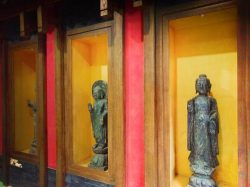 Following miles of walking and wandering, it’s pretty basic to say that we were hungry. Our guide took us to just beyond the temple complex around the Giant Wild Goose Pagoda to a restaurant owned by the Buddhist monks from the area. The service and atmosphere were wonderful and the food amazing.
Following miles of walking and wandering, it’s pretty basic to say that we were hungry. Our guide took us to just beyond the temple complex around the Giant Wild Goose Pagoda to a restaurant owned by the Buddhist monks from the area. The service and atmosphere were wonderful and the food amazing.
Being a Buddhist restaurant, it was also vegetarian. Authentic Chinese food really has a way, like this meal did, of both satisfying your appetite and making you so curious about what you could be cooking at home. Many of the dishes were presented in a way that meat might be, but it was fully vegetarian. The biggest hits were aubergine, aka eggplant, and the mock chicken in sour sauce. Oh, and the tingly salad. That was amazing.
Note: beware of the Sichuan pepper that is in a lot of authentic Chinese food. While it may not initially strike you as spicy, this particular seasoning (either whole or as an oil) will make your mouth a bit tingly. It’s nice; it’s weird; it’s genuine Imperial china. So good. We deemed the cabbage it was mixed with “Tingly salad.”
Now then, do you understand why a day in the Xi’an imperial garden will sate your need for the scenes of ancient Chinese paintings and the China you’ve only ready about? Yeah, it’s absolutely beautiful and captures so much of Chinese life, both today and long ago. The Giant Wild Goose Pagoda too, it’s so incredible and is just what you’d hope for.
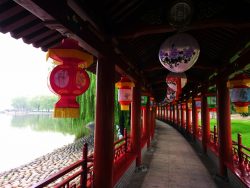 A visit to the Tang Lotus Garden is well worth the time and cost. It’s about $15-$20 USD, but like I said it’s well worth it. The cost of visiting the temple grounds around the Giant Wild Goose Pagoda is about $8 USD and again, worth it.
A visit to the Tang Lotus Garden is well worth the time and cost. It’s about $15-$20 USD, but like I said it’s well worth it. The cost of visiting the temple grounds around the Giant Wild Goose Pagoda is about $8 USD and again, worth it.
Visit both of these sites and spend as much time as you can there. You’ll not be bored, you’ll leave completely relaxed and you’ll feel like you’ve had the Chinese experience you were meant to have. Colorful China, indeed.

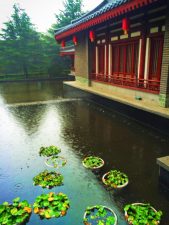
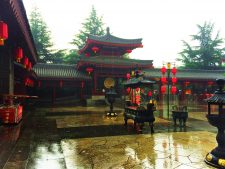
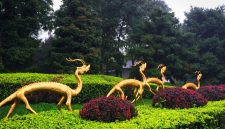
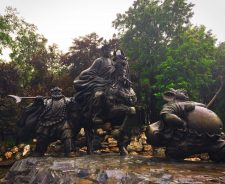
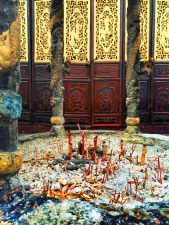
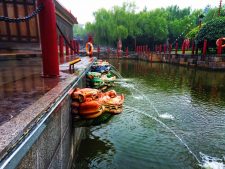
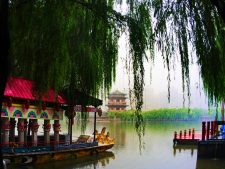
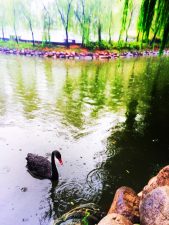
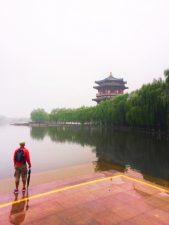

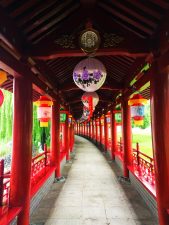
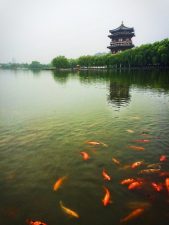
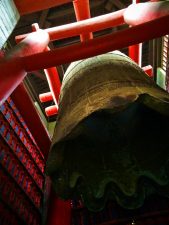
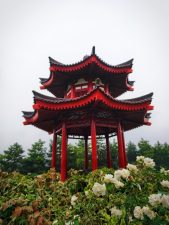
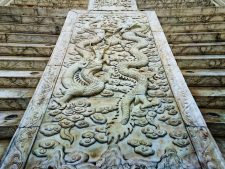
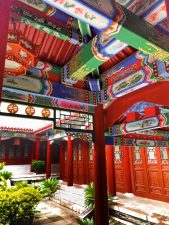

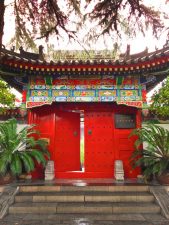
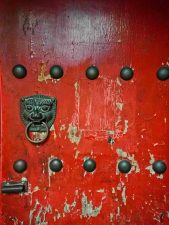
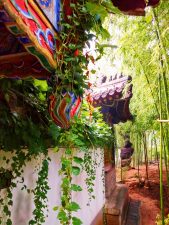
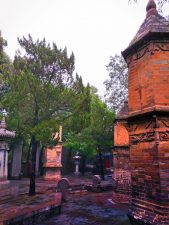
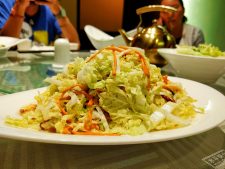



You two are AMAZING!!!!!!!!! Gorgeous pics of my hometown and yummy food make me homesick
How fortunate you are to be from Xi’an!! I have to confess, Yan’an stole a piece of my heart too, so I’m torn about where to explore more next time. Both cities are so amazing and our kids will have such an amazing time. Do you have any other must-see cities in Shaanxi (or another province) that you’d recommend?
Your photos were awesome! You’ve made us quite excited to visit China. Will definitely refer back to these posts when we are ready to plan.
Hey Rob,
Glad to come across your blog through Facebook Travel Blog Media sharing. I love hoe you narrated the story here 🙂 Xian looks a very interesting plae..
This is gorgeous!! I’ve always aanted to visit China and now you’ve really peaked my interest. What an amazing place and experience.
I have always wanted to visit China so I am really enjoying following your journey! Your photos are beautiful!
Wonderful write-up of an amazing day. Heck I was there with you and I still learned a couple new things just now. Love the photos too, well done 🙂
What a great experience! We’ve been talking about visiting China, but we just can’t decide where to start in this incredible country! It seems like it just full of amazing experiences
What a great post full of detail and excellent photographs. I haven’t yet been to Mainland China, only Hong Kong!
I’ve always liked Chinese culture and in fact, I’m on my way to Taiwan right now!
Oh Rob, I so envy your right now. Terracota soldiers was interesting enough and now this. Liked the history behind the Imperial gardens and the pagoda seems so vibrant and amazing
Amazing write-up. Loved it and the photos tooo 🙂
I am always amazed at how surreal the temples and gardens associated with Buddhism, in China and Japan and some other countries are. The whole atmosphere seems to be charged with a unique air of spirituality. I am sure you had a lovely and immersive experience.
This looks absolutely beautiful! Stunning pictures! X